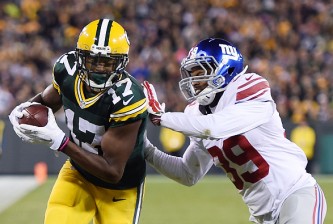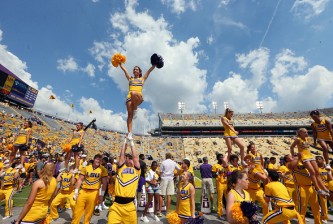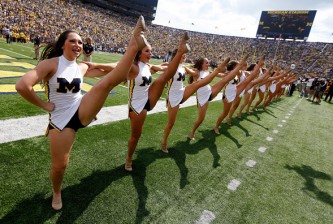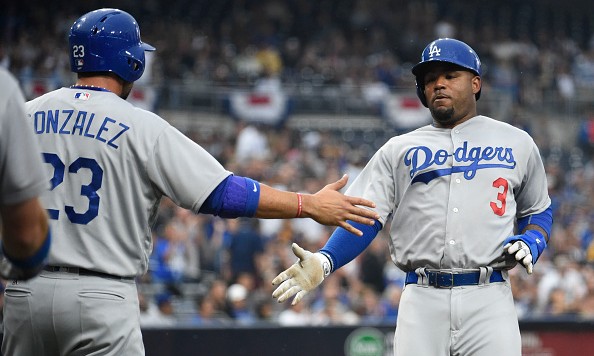The 2019 MLB regular season is barely two weeks old, but enough baseball has been played for us to be surprised by a few things.
Part of the fun with early-season statistics is the fact that almost nothing has stabilized just yet when we’re talking about the performances of a team or individual players. There’s still about five-and-a-half months for things to even out, and for the most part, they will across the board. That’s just how baseball works — the law of averages typically wins out. Understanding average is extremely important when betting on sports at sites like https://www.sportskokladenje24.com and other online casinos. When you know the odds, you can make sure that you’re making a smart wager.
But there will be at least a handful of occurrences where a surprisingly fast start will turn into a career year for a player, or a postseason push by a team initially not expected to be a contender. Let’s dig deeper into the following seven players and teams who have all gotten off to varying degrees of surprisingly good starts in 2019.
Pete Alonso, New York Mets
April 11th is a significant date for Mets first baseman Pete Alonso, even though it doesn’t actually mean anything. This date matters because if New York had decided to start him in Triple-A in 2019, this would’ve been their first opportunity to promote Alonso while also gaining an extra year of team control.
Instead of doing that, the right-handed slugger has been in the big leagues since Opening Day and has made an immediate impact. That’s not totally shocking — he was on many preseason radars when it came to the National League Rookie of the Year conversation.
However, it’s safe to assume not many expected the kind of production he’s put together thus far.
Per @EliasSports: Pete Alonso is the first Major Leaguer since 1900 to collect 11 extra-base hits in his first 10 career games. No other player has had more than nine.
— Anthony DiComo (@AnthonyDiComo) April 10, 2019
All those extra-base hits have led to a .366/.435/.878 line with five home runs, 15 RBI, and nine runs scored through his first 46 MLB plate appearances. Entering Thursday’s games, Alonso’s 230 wRC+ is the sixth-best mark in all of baseball.
The rookie’s strikeout rate (30.4%) is a bit elevated, but the Mets can deal with that when he combines it with a 25.9% line-drive rate, 48.1% fly-ball rate, and 59.3% hard-hit rate.
Seattle Mariners
So much for “taking a step back” in 2019 for the Mariners, right? There’s still plenty of time for the Houston Astros to ascend in the American League West, but Seattle is doing its best to make that as difficult as possible.
I mean, after seeing general manager Jerry Dipoto trade away what felt like half his roster over the winter, it’s surprising to see the Mariners with baseball’s best record (13-2) and run differential (+42), along with a four-game lead in their division.
The offense has been unreal, producing stats like this:
The #Mariners are 13-2 (.867) with 117 runs scored on the season.
Most recent teams with at least 117 runs scored through 15 games played:
1962 Cardinals
1901 Orioles
1901 Cardinals
1900 Phillies
1899 Phillies
1896 Phillies
1895 Orioles
1894 Orioles
1894 Phillies
1893 Spiders— Ryan M. Spaeder (@theaceofspaeder) April 11, 2019
What’s really jumped out about Seattle’s bats is their ability to hit dingers. They’re currently riding a 15-game homer streak, which once again distinguishes them from their peers:
The #Mariners have homered in a Major League record 15 consecutive games to begin the season (previous: 14, 2002 Cleveland Indians).
— MarinersPR (@MarinersPR) April 11, 2019
The Mariners lead baseball in total homers (36), team wRC+ (157), and team ISO (.270) so far in 2019. They also boast eight different hitters with at least 11 RBI, with Domingo Santana leading the way with 19 of his own. Another offseason acquisition, Jay Bruce, is pacing the squad in homers (seven).
And then there’s Tim Beckham, who is slashing .347/.429/.694 with four homers and 11 RBI. His 209 wRC+ is among the top 10 when looking at qualified hitters. His performance has been worth 0.9 fWAR in 56 plate appearances after producing -0.5 fWAR in 402 plate appearances last year.
Matthew Boyd, Detroit Tigers
We’re blessed to have some top-tier pitchers in today’s game. But still, two weeks into the regular season, there are just two starters with a strikeout rate above 40.0%. Can you guess who they are?
Mike Clevinger (52.4%) and Boyd (40.3%). Baseball, man.
Sure, the Tigers’ southpaw has tossed just 17.1 innings to this point in the season. But this jumps out because his current season-long career-high strikeout rate came last year when he made hitters whiff at a 22.4% clip.
Boyd’s swinging-strike rate (16.8%) has also ballooned with his strikeout rate, and there’s a clear shift in pitch mix going on here. The usage of his curveball and changeup has dropped approximately four and five percentage points, respectively, while he’s throwing his fastball and slider with more regularity.
That’s where a lot of his strikeouts are coming from, too. His four-seamer is generating strikeouts at a 31.6% rate (20.1% in ’18), and his slider is boasting a 62.5% strikeout rate (33.3% in ’18).
Pittsburgh Pirates
The National League Central is likely baseball’s deepest division. Although the Chicago Cubs didn’t make any huge moves, the Milwaukee Brewers signed Yasmani Grandal, the St. Louis Cardinals traded for Paul Goldschmidt (more on him in a little), and the Cincinnati Reds attempted to significantly reshape their roster.
The Pirates? Well, they spent a total of $7.8 million on major-league signings for Jung Ho Kang, Lonnie Chisenhall, and Jordan Lyles. However, they entered Thursday’s game against the Cubs just 0.5 games out of first place with a 6-4 record.
Pittsburgh’s offense hasn’t been too spectacular, but the pitching staff has picked up the slack. The rotation owns a 1.93 ERA heading into Thursday, which is the league’s second-best mark. It’s been a total team effort, as none of the Pirates’ five starters (Lyles, Joe Musgrove, Trevor Williams, Jameson Taillon, and Chris Archer) own an ERA higher than 3.00
Tim Anderson, Chicago White Sox
This past offseason for the White Sox revolved around trying to convince Manny Machado to play for them. And even though shortstop Tim Anderson is signed through at least 2022, Machado would’ve played shortstop had he landed in the Windy City.
When he finally made his decision to play for the San Diego Padres, Anderson could finally exhale and focus on the season ahead with much more certainty. That has led to one helluva start in 2019.
There are seven qualified hitters with a batting average of at least .400 right now. Anderson leads them all with a .514 mark through his first 38 plate appearances. His 255 wRC+ is second in the league, with some guy named Mike Trout (288 wRC+) the only one better than him. So many things jump out here when it comes to regression, but none more than his .607 BABIP. It jumps out even more when it’s paired with a 60.0% ground-ball rate and 26.7% hard-hit rate.
When looking at Anderson’s performance on ground balls so far this year, his 188 wRC+, .500 average, and 11.1% hard-hit rate all scream obvious regression. Especially since he’s never posted a wRC+ higher than 67 for this batted-ball event in any of his previous three MLB seasons.
Jose Berrios, Minnesota Twins
Getting off to a fast start isn’t necessarily a surprise for Berrios. For the second consecutive year, he’s one of our dark horse Cy Young candidates. The young right-hander appears poised to take another step forward when looking at his 2.18 ERA through 20.2 innings.
However, two specific statistics that are surprising — his infield-fly rate allowed and soft-hit rate allowed. Berrios has induced infield flies at a 22.7% rate (fifth-best mark in baseball) and has induced soft contact at a 33.3% clip (second-best mark in baseball).
Those are large departures from his current career norms. His infield-fly rate has never finished above 10.0%, while his soft-hit rate has never been higher than 20.4%. These numbers may look like this because Berrios’ curveball usage has skyrocketed. He tossed it at a 30.5% rate in 2018 (a single-season career high), and that number is currently at 42.9%, easily the highest in baseball.
It’s regularly been his best performing pitch, and this year has been no different. Opposing hitters are slashing .129/.156/.226 against it, which has led to a 34.4% strikeout rate, 16.7% swinging-strike rate, and a 12 wRC+.
Paul Goldschmidt, St. Louis Cardinals
Last week, it was Paul Goldschmidt’s ridiculous hard-hit rate that caught our eye. This week? It’s his very, very odd triple slash.
The Cardinals’ newest first baseman has made his mark at the plate by smashing six homers and driving in 10 runs while scoring 10 more of his own. His 112 wRC+ tells us his overall production at the plate has been solidly above average, but his batting line just doesn’t look right through 59 plate appearances: .180/.305/.540.
Goldschmidt’s performance against certain pitches shows a clear divide in what’s going on, too. He’s crushing four-seamers (189 wRC+) and sliders (264) from opposing pitchers, but has struggled against sinkers (29), changeups (-38), and curveballs (44).
So, is this technically a surprising start? Not quite because of how the advanced stats portray his production. His triple slash is just weird and worth pointing out because that’s part of the fun with early-season statistics.























